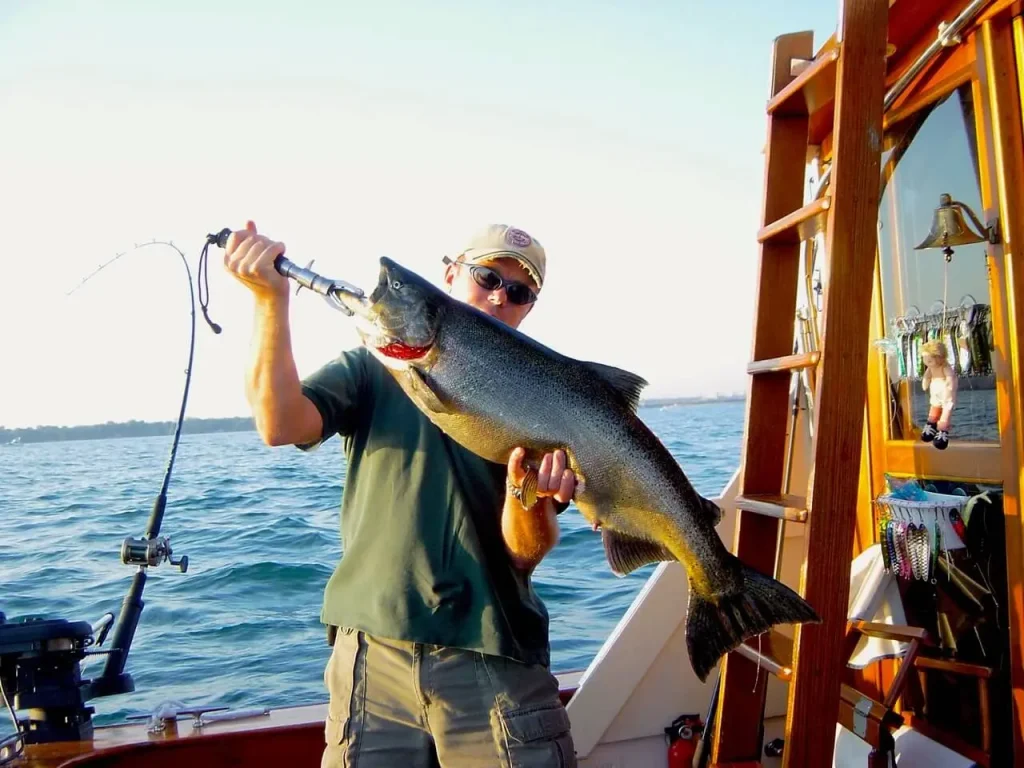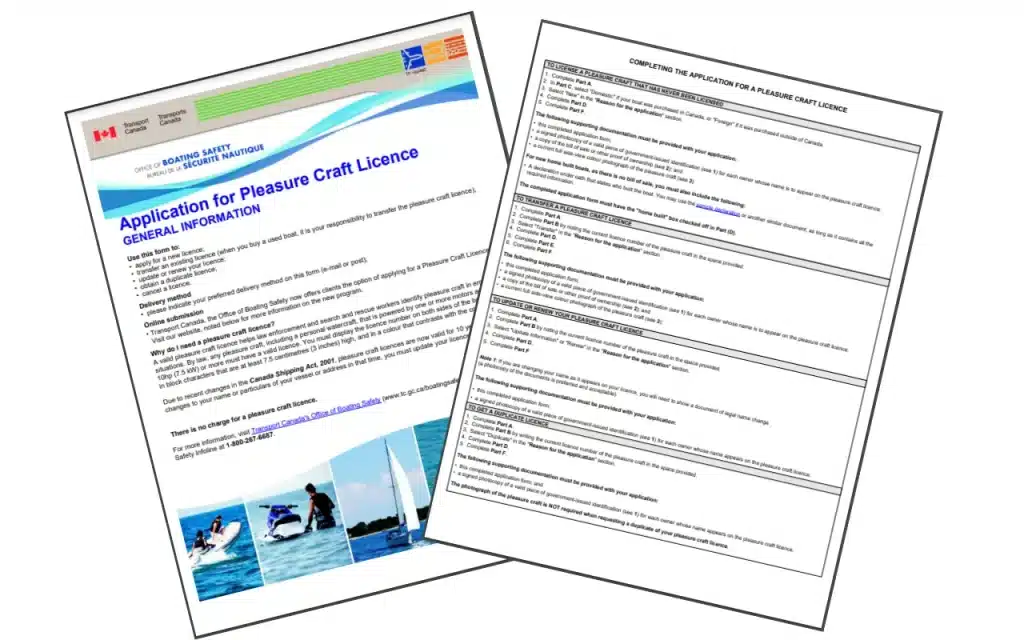Home / Boating Safety Manual / All About Maximum Boat Capacity for Pleasure Craft in Canada
10% OFF WITH CODE:
BLACKFRIDAY10
Every boat has a maximum capacity. Overloading your vessel with passengers or equipment can have serious consequences, including instability, swamping, capsizing, and loss of control.
Most pleasure craft under 6 m in Canada have a compliance notice on board that indicates the maximum load the vessel can safely carry, including both cargo and people. It is a key indicator of how far you can push the limits of your boat before you are at risk of a dangerous accident.
Key takeaways
- A compliance notice is a guarantee from the manufacturer or importer that a boat meets the construction requirements set out in the Canadian Small Vessel Regulations.
- It shows the maximum number of adults, recommended gross load capacity, and maximum engine power (horsepower), in addition to the Manufacturer’s Identification Code (MIC), model of the vessel, and Hull Identification Number (HIN).
- Operators are not allowed to remove or change a compliance notice. However, operators cannot be fined if the manufacturer/importer failed to attach one.
- They are also called capacity labels (when attached to recreational vessels less than 6 metres).
Table of contents
- Boat capacity rules in Canada
- Reading a boat capacity plate (or capacity label)
- Main risks associated with exceeding boat capacity
- 1. Capsizing (flipping over)
- 2. Swamping (filling with water)
- 3. Loss of control and maneuverability
- 4. Risk of falling overboard
- 5. Fines
- Frequently Asked Questions
Boat capacity rules in Canada
Canadian rules for maximum boat capacity are primarily governed by Transport Canada’s Small Vessel Regulations and the Construction Standards for Small Vessels (TP 1332E).
Ultimately, the owner and operator are responsible for making sure that the vessel is not overloaded and is operated safely. This means correctly interpreting the capacity plate and following all related safety guidelines and operational norms.
Reading a boat capacity plate (or capacity label)
A boat capacity plate, often called a compliance notice in Canada, is a small, permanently affixed label found on most recreational boats, typically near the helm or on the transom.
It shows:
- Maximum Gross Load: This is the total weight the boat can safely carry. This includes the weight of the passengers, the motor, fuel, and all gear/equipment (e.g., life jackets, anchor, cooler).
- Maximum Number of Persons: This is the maximum number of people the boat can safely carry, even if their combined weight is less than the Maximum Gross Load.
So, to correctly interpret your capacity plate, you have to think about the total weight of everything in the boat and count the number of people, then do the math.
Main risks associated with exceeding boat capacity
Exceeding your vessel’s maximum capacity will render it unstable and more likely to take on water. Your boat may become swamped, capsize and/or sink, and those on board will be at risk of falling overboard and potentially suffering from cold water shock.
1. Capsizing (flipping over)
Overloading the vessel, especially if weight is high or unevenly distributed, raises the center of gravity, making the boat unstable and prone to rolling or flipping.
2. Swamping (filling with water)
Too much weight causes the boat to sit lower in the water, reducing the vertical distance from the waterline to the deck/gunwale (freeboard). This makes it much easier for waves, or the boat’s own wake, to wash over the side and swamp the vessel.
3. Loss of control and maneuverability
An overloaded boat is sluggish, harder to steer, and takes longer to stop, making it difficult to avoid other vessels or obstacles, especially when a quick maneuver is needed.
4. Risk of falling overboard
When the boat is overloaded and unstable, sudden shifts in weight (passengers standing up or moving) can easily cause people to be thrown overboard.
5. Fines
Operating a vessel in a manner that is dangerous to the public, or without consideration for the weather, hazards, or number of people, can be considered careless operation under the Small Vessel Regulations, which may result in significant fines. Grossly overpowering or overloading a vessel could be a factor in such a charge.
Get your boating licence with Drive A Boat Canada!
We offer a comprehensive online course leading to lifetime certification. Register with Drive a Boat Canada today, and learn everything you need to know to pass the boating exam. With your boating licence (PCOC), you can take to the water legally anywhere in the country.
Important: This information informs operators of the vessel’s safe operating limits in good conditions. Any boat’s capacity will be lower in difficult weather.
Frequently Asked Questions
Passengers should not sit on the gunwales, bow, seat backs or anywhere that is not specifically intended for seating. Particularly in a small boat, it’s important to evenly distribute and balance the weight of all passengers and equipment.
The weight should also be kept as low in the boat as possible, so passengers should remain seated while underway. If someone needs to move, they should keep 3 points of contact with the boat at all times (e.g. two feet, one hand).
Sources
- Government of Canada Small Vessel Regulations. Department of Justice. https://laws-lois.justice.gc.ca/eng/regulations/sor-2010-91/
- Transport Canada. (2010, April) CONSTRUCTION STANDARDS FOR SMALL VESSELS [PDF]. https://tc.canada.ca/sites/default/files/migrated/tp1332e.pdf
Last articles



